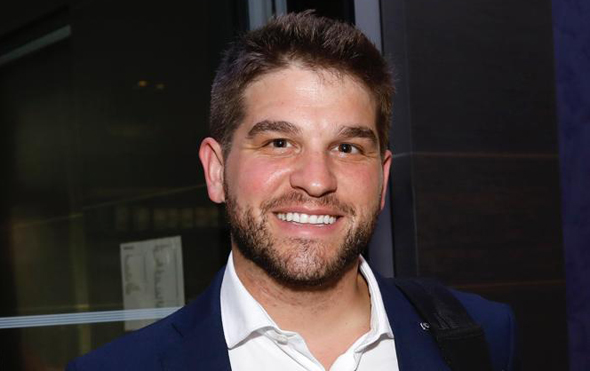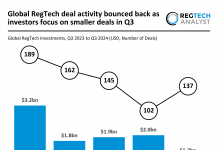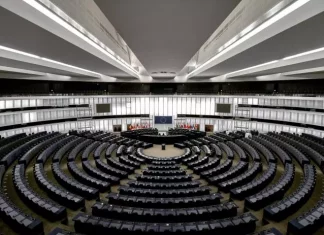Money laundering in global financial markets is like “whack-a-mole”, when you stop one scheme, another just pops up, according to Daniel Nisman, the head of financial sector solutions at web intelligence company Cobwebs.
Governments around the world have spent a lot of time, effort and funding to create regulations to try and crack down on money laundering and corruption. However, the financial market is still plagued with vulnerabilities. The United Nations estimates that between $800bn and $2trn is laundered through banks each year. Financial institutions are being put on the frontlines to fight this fraud and are expected to conduct law enforcement-grade investigations and intelligence-driven risk assessments on their counterparties. The Northern European money-laundering scandal of 2017, where €200bn was reportedly found to have been processed illicitly through Baltic branches of Nordic banks, shows there are still major issues in the system.
“Something’s definitely not working,” Nisman says. “Traditional banking, which is the most heavily regulated, is still the most favoured conduit for criminals trying to launder dirty cash.” One of the reasons for this, is that most of the criminal organisations laundering money know all of the vulnerabilities in financial institutions. Most of the time, if the offender, and source of dirty cash on a politically exposed persons list or watchlist, they will just go through a connected network to launder illicit funds.
When taking on a high-opportunity, but high-risk clients, a financial institution has one of three options, Nisman states. They can choose to have no dealings with any client in a high-risk jurisdiction or sector because they don’t want to take the chance, but this loses them clients and business. The next option is to do nothing and “put your head in the sand, but that puts you at significant risk,” he says. The final choice is to spend a lot of time and money on enhanced due diligence, but often times they too are based on rudimentary, manual checks that scratch the surface of the web, by straining onboarding times and budgets.. These limited options have a major impact on business.
“In some financial sectors, we’ve even seen shrinking, for example, in the private banking sector in Europe, because of de-risking they’re actually shrinking, as they’re giving up on business.” This is due to firms just not wanting to take the risk or have the right tool. Cobwebs is helping financial firms solve their money laundering issues through a combination of cybersecurity and regulation technology.
“Cobwebs plugs the remaining gap in the RegTech market, which is the whole aspect of client onboarding, client reviews, and client risk assessments, in a manner that enables business.” The companys’ technology helps firms be better adapted to preventing money laundering during the onboarding and client review process, and other financial crime risks among counterparties.
Its technology differs from other due diligence solutions by searching and deeply analyzing data all three layers of the web. These are the surface web, which includes search engines and blogs, the deep web, which spans forums and social media, and then the dark web. Traditional KYC methodologies typically don’t go this far; it consists of checking static watchlists, then possibly going to explore google, conducting manual analysis and searching, but that only reaches around 4% of the internet, Nisman says. Various studies conducted by leading institutions on the matter still point to technology, automation, and static data sources as key concerns among compliance officers.
“If I have a corporate client domiciled in a designated high-risk jurisdiction, I can plug that company into the system, it will immediately and automatically plot out the network of the company, who are their directors, who are they working with, what negative reputation is there on any of those nodes of that network,” Nisman explains.
Not only does the platform look into what is being said but also accounts for who it is by and whether its painting a positive or negative picture of the customer. It helps to uncover a person’s seemingly hidden networks, eliminating the most common money laundering tactics.
Launderers will use complex networks to exploit vulnerabilities from very creative methods and entry points. These often rely on getting access as customers by exploiting local partners of financial institutions, “they will even stoop to trying to insert moles into sensitive employment positions,” Nisman says. This is where solutions like Cobwebs can help ensure correct due diligence, risk assessments and background checks on all aspects of their business to make sure they’ve protected their entry points.
The company “goes where other similar companies are too afraid to go in terms of dynamic media sources.” Other businesses are doing network analysis, but few are covering all three areas of the web. For example, some only go through corporate registries, but these are static and can even be tampered with in some places, including via legal action. Likewise, there are solutions which will do media reviews or others that explore the dark web, but not all together, making it hard for deep due diligence.
“We have a very bold vision, and that enhances the integrity of the traditional financial market across all different types of financial institutions,” continues Nisman. “So it forces the money launderers, to basically find other sources of what I call the oxygen for their operation. I always say money laundering is the oxygen that allows criminals to breathe. We want to take away that main artery in the traditional financial sector.”
Cobwebs is removing that valve by giving gatekeepers of the financial market the tools and expertise to expose harmful networks without incurring a financial and time burden. “Cobwebs is one of the only providers, if not the only provider, that is offering a dedicated financial investigator academy to complement the technology it provides,” he says. The company is launching the academy to teach its clients on how to conduct automated web investigations, reduce false positives, and improve their fight against money laundering.
The company’s expertise is another key ways in which it is unique to other players in the market, Nisman adds. Not only has the company created a team with expertise within financial due diligence and the needs of the financial market, but it has also gathered a wealth of cyber expertise from a range of industries, including military intelligence, government/regulatory, and law enforcement. With the expertise, the Cobwebs Investigator Academy (CWIA) will further ensure businesses are best prepared for fighting money laundering.
Regulators around the world have been trying their hardest to satisfy growing public outcry over the continued harm to the integrity of their financial markets. There are numerous regulations coming into the market as a result. The Fifth Anti-Money Laundering Directive (5AML) was enforced in the European Union on January 10 2020 and despite only just being introduced, 6AML is already pitched for a December 2020 implementation. The market is not short of regulations, but there is so much these legislations can achieve and this can be seen by the sheer number of money being laundered and companies being hit with fines. Businesses are on the frontline and increasing regulation is not the solution to the money laundering problem.
“You can’t be too specific with the regulations, because otherwise it could be bad for business and it could also create too much of a checkbox approach and still allow money launderers to get around those restrictions,” Nisman concludes. “They can’t have a one size fits all approach in such a dynamic market, where there are so many different kinds of financial instruments that are being used. The solution is to unleash the creativity and ingenuity of the private sector, to ensure that financial institutions have the tools and training they need to succeed in driving safe, compliant business.”
Copyright © 2020 FinTech Global
Copyright © 2018 RegTech Analyst






